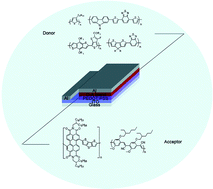Organic photovoltaics (OPVs) are a promising cost-effective alternative to silicon-based solar cells, and possess low-cost, light-weight, and flexibility advantages. Recently, great advances have been achieved in the development of novel photovoltaic materials and device structures, and the power conversion efficiencies can now reach 7.7%. In this review we summarize the most recent developments in conjugated polymers for high-efficiency OPV devices. We focus on correlations of polymer chemical structures with properties, such as absorption, bandgap, energy levels, mobilities, and photovoltaic performances. This structure-property relationship analysis may guide rational structural design and evaluation of photovoltaic materials.
